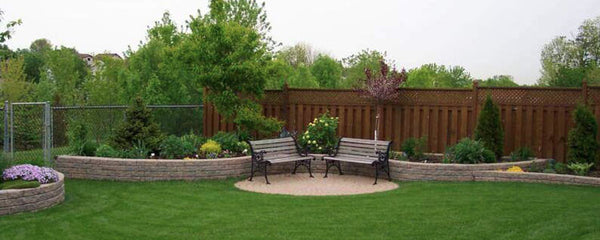
Tips For Great Garden Design
A great garden is not all about whether flowers are blooming or shrubs are trimmed. Although those things can make an aesthetically pleasing space; it’s also about good layout, atmosphere and how the space works for you. Your garden is an extension of your home and your environment, so it’s only natural that you want to feel comfortable and relaxed. With this in mind, here are some top tips to help make your garden great and reach it’s full potential.
Planning where to plant
When planning your garden, firstly you need to consider what you plan on growing, whether it’s flowers in flowerbeds or vegetable planters. To decide where these go you need to consider where the sun reaches and what kind of soil you have. For example, growing vegetables usually requires a good amount of sun throughout the day and soil, which is not too moist, and drains well.
When you begin the planting process there are many elements to consider to ensure all your efforts pay off. After deciding what you would like to plant, it is imperative for the plants to flourish in the right soil and be topped with the right mulch. For example, the best mulch for a vegetable garden – if you’re growing greens – is an organic mix, which could include shredded leaves, straw, shredded paper or newspaper – most of which you will most likely find in your compost pile if you have one.
The benefits of using the right soil and mulch
Using mulch and the right soil means you plants and veggies receive all the right nutrients they need to flourish. Using homemade compost reduces the need for artificial fertiliser’s, freeing your garden of unnecessary, damaging pesticides. This leads to a healthier garden, healthier veggies and a healthier you! Mulch also ensures that your veggie/plant beds stay moist but not damp, as the organic materials in your mulch promote aeration and good drainage.
Hints and tips for planting with mulch
- Use leaves that have aged for at least 9 months. This will ensure the composting process has worked it’s magic!
- Garden trimmings and grass clippings mixed into your soil and mulch should be sun-dried for at least a day.
- Place your mulch an inch away from plant stems, otherwise rot and fungus may grow.
- Your plants need that right balance of carbon rich and nitrogen rich materials to thrive. One way to ensure this is to add some organic, nitrogen rich materials into your compost and mulch. This stops the decomposing leaves and straw from absorbing all the nitrogen from the soil as it decomposes.
Sourcing soil and mulch
If home composting is not for you or you simply don’t have the room for a compost pile, then you’ll need to source the right soil and mulch elsewhere; there are many reputable mulch suppliers up and down the country that can provide you with good quality mulch, whether it be for borders, raised beds or vegetable growing.
Where to walk
The other aspect of garden layout is considering where you will have a path and how wide it will be. Remember that a bigger path will be easier to navigate and give access to more of your garden – not only that but if will make the space feel bigger.
Materials for your path could also change how a space feels – it’s important to think about the maintenance involved. You could either have to sweep gravel back into place often or replace a cracked stone slab once in a while. Work out what works for you and the time you plan spending on your space, rather than just what looks good on first inspection.
In addition to choosing your pathway, introducing a patio or deck could really give your garden the outside/inside feel. Warm summer evenings spent in the garden are made even better when you have a cosy part of the garden in which to relax. Patio space is also easy to maintain over grass and it’s also where you can get really creative and express your style with furniture and ornamental aspects, along with pots and planters of course.
It’s not all about what’s on the ground
Another important aspect to remember is not to neglect the vertical space you have. From climbing shrubbery, trees and archways and arbours’, adding structure and form to your garden can really transform the space. Climbers like Wisteria can add lots of interest and drama, taking your garden to the next level – literally!
Getting a garden that works for you
Tackling your garden, whether from scratch or a remodel, can be a daunting task. The main way to reach garden success is to treat your plants with care, plan a layout you love and fits your needs and ensure your garden has a maintenance level that suits your lifestyle. You can rest assured that mixing structure and form will create an interesting space all year round, and good quality soil and mulch, will ensure your plants flourish in their own way every season.

Post a Comment!